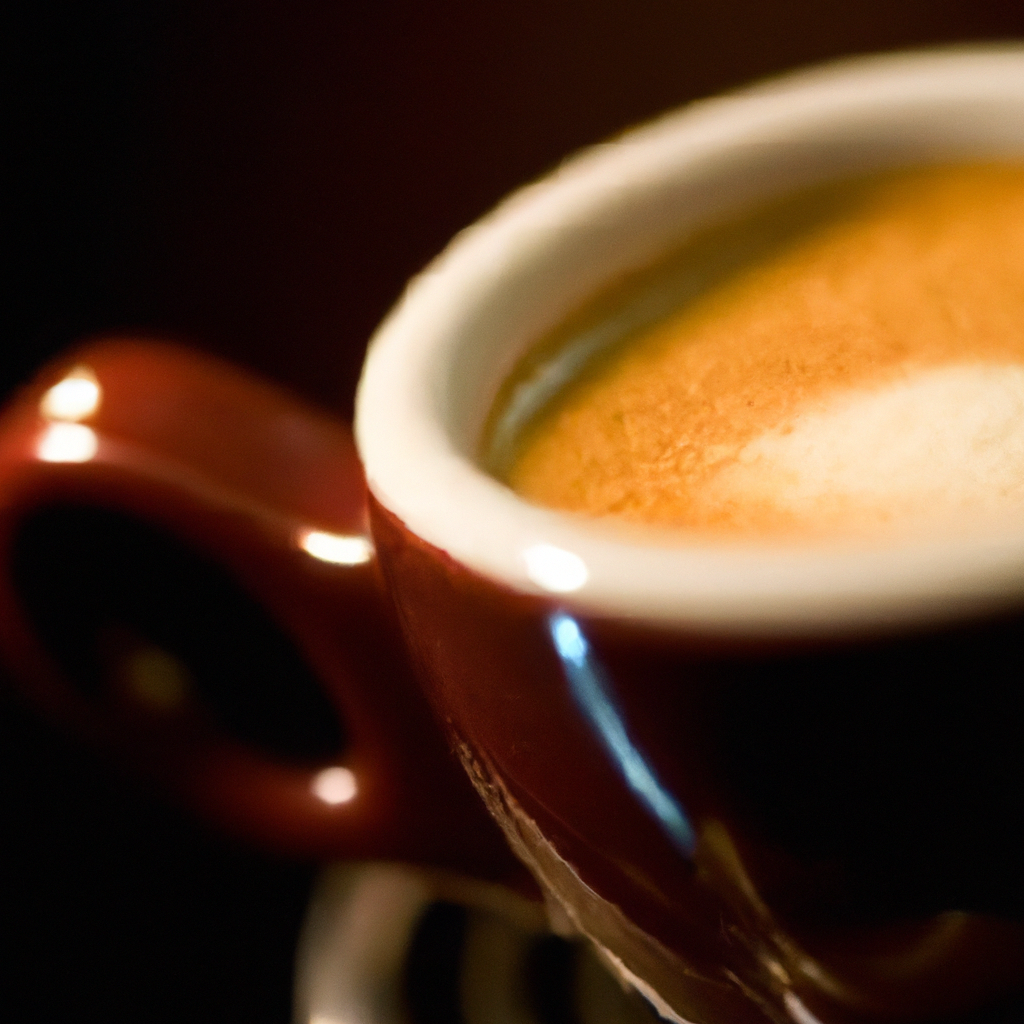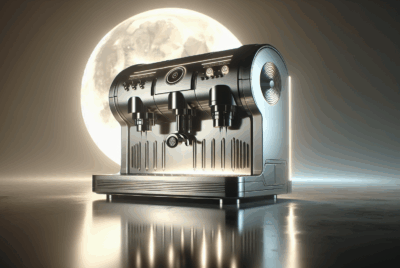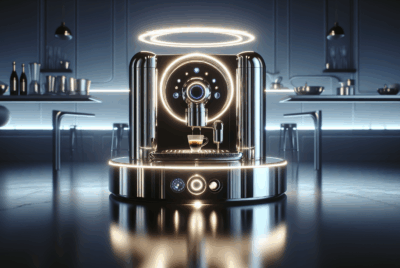The Art of Crafting Espresso Drinks
As an Amazon Associate, I earn from qualifying purchases, at no additional cost to you. Disclaimer
Ah, the invigorating world of espresso drinks. The way the aromatic steam gracefully dances through the air, swirling with the rich, velvety essence of espresso. It’s a craft, really. A delicate art that requires precision, passion, and a touch of creativity.
From the first shot of espresso to the final flourish of foam, every step holds the potential to create a masterpiece in a cup. So gather round, my fellow coffee lovers, as I unveil the secrets behind the art of crafting espresso drinks. Get ready to embark on a journey of taste, texture, and pure delight. Let’s dive into the depths of this caffeinated world together.
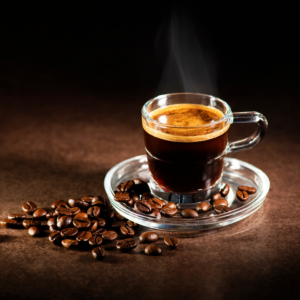
The Art of Crafting Espresso Drinks
Welcome to the wonderful world of espresso drinks! As a coffee lover, I have always been fascinated by the art of making that perfect cup of espresso. In this comprehensive article, I will guide you through the process of crafting delicious espresso drinks. We will dive into the basics of espresso, explore the necessary equipment and tools, discuss the importance of choosing the right coffee beans, and delve into grinding and tamping techniques. We will also explore the brewing process, the role of water, the importance of ratios, and the art of milk frothing. Finally, we will take a closer look at some common espresso drinks and their recipes. So grab your cup of coffee and join me on this caffeine-fueled adventure!
Understanding the Basics of Espresso
Definition and Origins of Espresso
Before we dive into the technicalities of making espresso drinks, let’s first understand what espresso is all about. Espresso is a concentrated form of coffee that is brewed by forcing hot water through finely ground coffee under high pressure. This results in a strong, flavorful, and aromatic cup of coffee. The origins of espresso can be traced back to Italy, where it was first invented in the early 20th century. Since then, it has taken the world by storm and become the foundation for various espresso-based drinks.
Characteristics of a Good Espresso Shot
A good espresso shot should possess certain key characteristics. Firstly, it should have a rich crema, which is the creamy foam that sits on top of the espresso shot. The crema not only adds aesthetic appeal but also enhances the overall flavor and texture of the espresso. Secondly, a good espresso shot should have a balanced taste profile. It should be neither too bitter nor too sour, but rather exhibit a harmony of flavors. Lastly, a good espresso shot should have a smooth and velvety mouthfeel, leaving a pleasant aftertaste that lingers on your palate.
Different Types of Espresso Machines
There are various types of espresso machines available in the market, each with its own set of pros and cons. The most common types include manual espresso machines, semi-automatic espresso machines, and fully automatic espresso machines. Manual espresso machines require the user to manually control the water flow and extraction time, giving them the utmost control over the brewing process. Semi-automatic machines offer a balance between control and convenience as they automate certain functions while still allowing manual adjustments. Fully automatic machines handle everything from grinding the beans to tamping and extracting, making them the easiest to use but with less customization options. It’s important to consider your skill level and desired level of control when choosing an espresso machine.
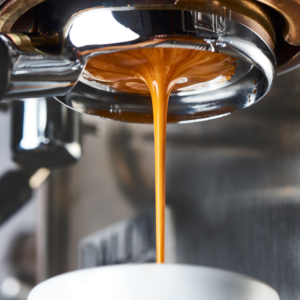
The Equipment and Tools You’ll Need
Espresso Machine
The espresso machine is the heart and soul of your espresso-making setup. It is responsible for extracting the coffee using high pressure and hot water. When choosing an espresso machine, consider factors such as price, build quality, ease of use, and features like temperature control and pressure profiling. Keep in mind that a good espresso machine is an investment that will greatly impact the quality of your espresso drinks.
Grinder
A quality grinder is essential for achieving a consistent and precise grind size. A burr grinder is recommended over a blade grinder, as it produces a more uniform grind. The grind size plays a crucial role in the extraction process, affecting the overall taste and quality of the espresso shot. Invest in a grinder that allows for easy and accurate adjustments to achieve the desired grind size.
Milk Frother
If you enjoy milk-based espresso drinks like cappuccinos and lattes, a milk frother is a must-have tool. There are various types available, including steam wands, standalone frothers, and automatic frothers. Steam wands offer the most control and allow for the creation of latte art, while standalone frothers provide convenience and simplicity. Choose a milk frother that suits your preference and desired level of frothiness.
Tamper
A tamper is a tool used to compress the coffee grounds in the espresso machine’s portafilter. It ensures an even distribution of coffee grounds, creating a uniform bed for water to pass through during extraction. Look for a tamper that is the right size for your portafilter and feels comfortable in your hand. A properly tamped coffee bed will allow for an even extraction and lead to a better-tasting espresso shot.
Weighing Scale
Accurate measurement is crucial in achieving consistency with your espresso brewing. A digital weighing scale allows you to precisely measure the amount of coffee grounds and water used in your brew. This helps you maintain the desired ratio and adjust accordingly for different coffee beans and brewing parameters.
Espresso Shot Glasses
Investing in a set of espresso shot glasses is a small but important step in your espresso journey. These glasses are designed to showcase the beautiful crema and help you evaluate the color, texture, and viscosity of your espresso shots. Look for glasses with a capacity of around 2 to 3 ounces to accommodate the typical espresso shot volume.
Knock Box
A knock box provides a convenient and sanitary way to dispose of used coffee grounds. It is a container specifically designed to withstand the repeated impact of knocking the portafilter against it to release the spent coffee puck. Opt for a knock box that fits your workflow and has a sturdy construction to prevent any mess or damage to your countertop.
Cleaning Tools
Proper maintenance and cleaning of your espresso equipment are crucial for longevity and consistent flavor. Invest in a group head brush, backflushing detergent, and microfiber cloths to keep your espresso machine and grinder clean. Regular cleaning helps prevent the buildup of stale coffee oils and ensures optimal performance.

Choosing the Right Coffee Beans
The Importance of Freshness
When it comes to making great espresso drinks, using fresh coffee beans is of utmost importance. Coffee beans start to lose their flavor and aroma immediately after being roasted. Aim to use beans within two weeks of the roast date for optimal freshness. Consider purchasing beans from local roasters or specialty coffee shops that prioritize freshness and provide roast dates on their packaging.
Selecting the Right Roast
The choice of roast level is a matter of personal preference and can greatly influence the flavor profile of your espresso. Lighter roasts tend to highlight the nuanced flavors and acidity of the coffee, while darker roasts bring out bold and smoky notes. Experiment with different roast levels to find your preferred balance between brightness and richness.
Single-Origin vs. Blended Beans
Coffee beans can either come from a single geographical origin or be blended from multiple origins. Single-origin beans offer a unique and distinct flavor profile that reflects the specific region and growing conditions. On the other hand, blending beans allows for a more complex and balanced flavor profile by combining different characteristics. Consider experimenting with both single-origin and blended beans to discover your favorite espresso flavor profiles.
Considering Flavor Profiles
Different coffee beans possess their own inherent flavors and aromas, often described using terms like fruity, nutty, floral, chocolaty, and earthy. Consider the flavor profile of the coffee beans when selecting them for your espresso drinks. This will help you create a well-rounded and enjoyable cup of coffee that suits your taste preferences. If possible, consult your local coffee experts or roasters for recommendations based on the flavor notes you enjoy.
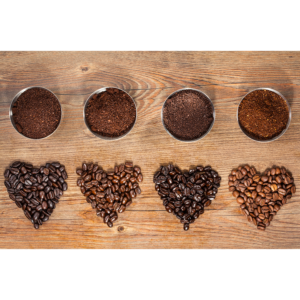
Grinding and Tamping Techniques
The Role of Grind Size
Grind size is one of the most critical factors in achieving a well-extracted espresso shot. Finer grinds result in a slower extraction, producing a stronger and more flavorful shot. Coarser grinds, on the other hand, lead to faster extraction with a lighter body. The appropriate grind size depends on various factors such as the coffee beans used, the brewing time, and the desired taste profile. Experiment with different grind sizes to find the sweet spot for your preferred cup of espresso.
Manual vs. Automatic Grinders
When it comes to grinding coffee beans for espresso, you can choose between manual and automatic grinders. Manual grinders require some physical effort but offer precise control over the grind size. Automatic grinders, on the other hand, are more convenient but may lack the level of precision desired by espresso enthusiasts. Consider your level of involvement and desired grind consistency when selecting a grinder.
Proper Tamping Technique
Tamping is the process of compressing the coffee grounds in the portafilter to create an even surface for water extraction. The key is to apply consistent pressure and maintain a level tamp. A tamp that is too loose will result in under-extraction, while a tamp that is too tight can lead to over-extraction and uneven extraction. Practice your tamping technique and experiment with different pressures to achieve a uniform coffee bed.
Common Tamping Mistakes to Avoid
When tamping coffee grounds, there are a few common mistakes to be aware of. Firstly, avoid tapping the portafilter against a hard surface to settle the grounds, as this can lead to uneven distribution. Instead, use a light leveling motion with your finger or a distribution tool to ensure an even coffee bed. Secondly, do not apply excessive force when tamping, as this can lead to channeling and poor extraction. Lastly, make sure to clean any coffee grounds from the edges of the portafilter before inserting it into the espresso machine to avoid a poor seal.
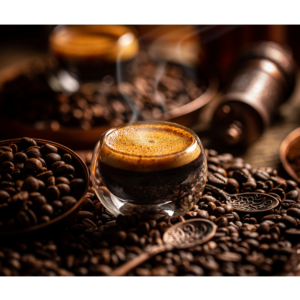
The Brewing Process
Preheating Your Equipment
Before starting the brewing process, it is essential to preheat your espresso machine and portafilter. This helps stabilize the temperature and ensures a consistent extraction. Run hot water through the group head and portafilter for a few seconds to warm them up. Empty the portafilter and dry it thoroughly before continuing with the next steps.
Measuring the Coffee and Water
Achieving the perfect coffee-to-water ratio is crucial for a balanced and flavorful espresso shot. Start by measuring the desired amount of coffee beans using a weighing scale. As a general guideline, aim for a ratio of 1:2, where 1 gram of coffee is extracted with 2 grams of water. Adjust the amount of coffee and water based on your preference and the size of your espresso shot. Remember to account for variables such as grind size, roast level, and personal taste preferences.
Understanding Extraction Time
Extraction time refers to the duration it takes for water to pass through the coffee grounds during the brewing process. The general rule of thumb is to aim for an extraction time of around 25 to 30 seconds. This allows for a balanced extraction and ensures a well-rounded flavor profile. However, extraction time can be adjusted based on personal preference. If the extraction is too fast, resulting in a sour shot, try using finer grinds or increasing the amount of coffee. If the extraction is too slow, leading to a bitter taste, consider using coarser grinds or decreasing the amount of coffee.
Troubleshooting Extraction Issues
Sometimes, despite carefully following the brewing process, you may encounter extraction issues. If your espresso shot is sour and under-extracted, it may be due to a coarser grind size, insufficient coffee dosage, or a short extraction time. Try adjusting these variables to achieve a more balanced shot. Conversely, if your shot is bitter and over-extracted, it may be a result of a finer grind size, excessive coffee dosage, or a long extraction time. Make adjustments accordingly to achieve a smoother and more enjoyable shot.
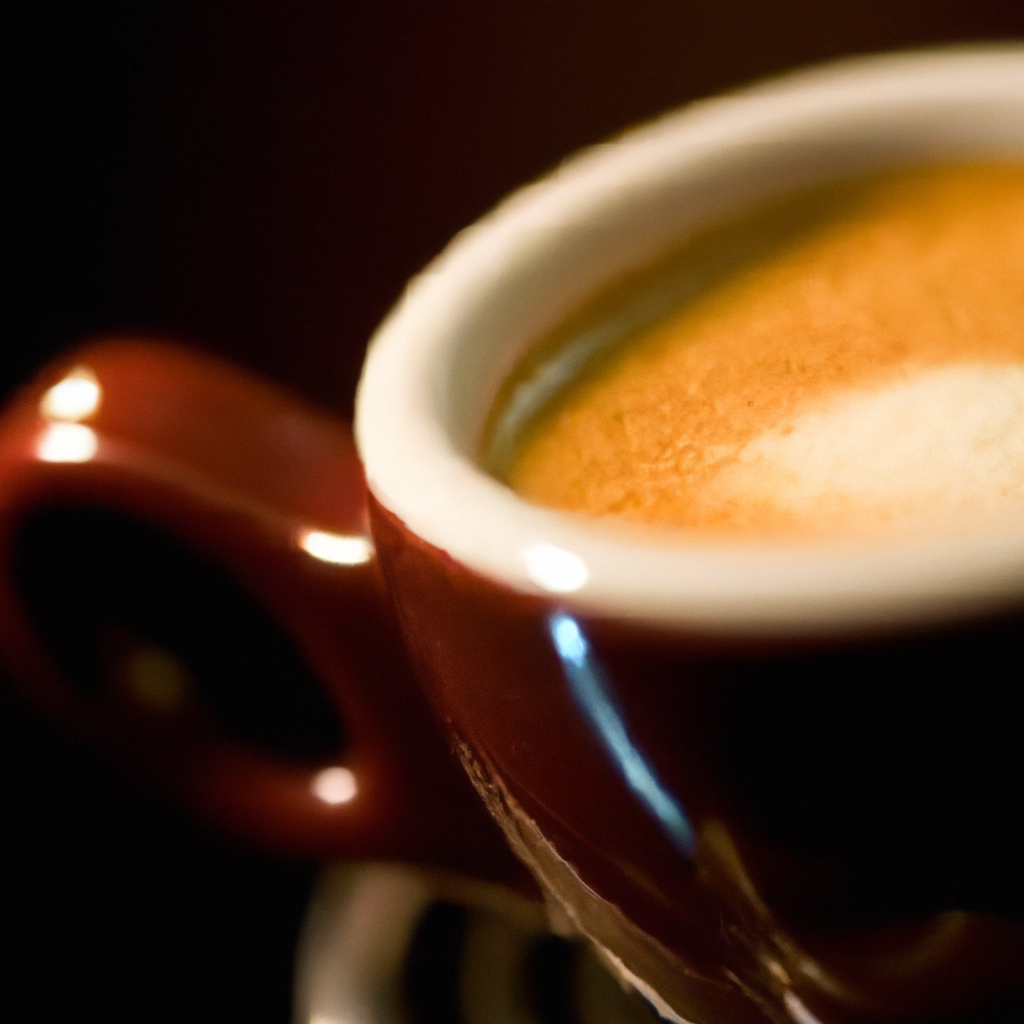
The Role of Water
The Importance of Water Quality
Water quality has a significant impact on the flavor and overall quality of your espresso. The ideal water for brewing espresso is clean, fresh, and free from impurities that can affect the taste. Minerals in the water, such as calcium and magnesium, play a role in extracting desirable flavors from the coffee beans. However, excessive minerals can lead to scale buildup in your espresso machine. Consider using filtered water or investing in a water softener to strike a balance between extracting flavors and protecting your equipment.
Filtering and Softening Water
If your tap water is high in mineral content, filtering and softening the water can help improve the quality of your espresso. There are various water filtration systems and water softeners available that can reduce impurities and mineral content. Experiment with different filtration methods to find the water profile that complements your chosen coffee beans and personal taste preferences.
Water Temperature
The temperature of the water used for brewing espresso is crucial. Ideally, the water temperature should be between 195°F and 205°F (90°C and 96°C). Water that is too hot can result in a bitter-tasting shot, while water that is too cool may lead to under-extraction and a sour shot. Many espresso machines have built-in temperature controls, while others require manual adjustment. Ensure that your machine is set to the appropriate temperature or make manual adjustments as needed.
Water-to-Coffee Ratio
The water-to-coffee ratio is a crucial aspect of dialing in your espresso recipe. As mentioned earlier, a general guideline is to aim for a 1:2 ratio, using 1g of coffee for every 2g of water. However, this ratio can be adjusted based on personal preference and the specific coffee beans used. Experiment with different ratios to find the perfect balance of strength and flavor for your espresso shots. Remember to keep track of the variables used in each brewing session to help you replicate successful recipes.
The Importance of Ratios
Understanding the Golden Ratio
The golden ratio, also known as the ideal coffee-to-water ratio, plays a vital role in achieving consistent and flavorful espresso shots. The widely accepted golden ratio for espresso is 1:2, where 1 part coffee is extracted with 2 parts water. This ratio provides a balanced cup with strong flavors and a rich mouthfeel. However, it’s essential to note that personal taste preferences can vary, and experimenting with different ratios allows you to tailor your espresso to your liking.
Adjusting Ratios for Personal Preference
While the golden ratio serves as a starting point, it’s important to remember that personal taste preferences differ. Some coffee enthusiasts prefer a stronger and more intense espresso, while others enjoy a milder and more balanced cup. Adjusting the coffee-to-water ratio allows you to customize your espresso to your liking. Increase the coffee dosage for a stronger shot or decrease it for a milder taste. The water volume can also be adjusted accordingly to maintain the desired ratio.
Experimenting with Brew Ratios
Don’t be afraid to experiment with different brew ratios to discover your preferred taste profile. A wider range of coffee-to-water ratios allows you to explore different intensities, flavors, and extraction characteristics. For example, a higher coffee dosage with a lower water volume creates a stronger shot, while a lower coffee dosage with a higher water volume produces a milder cup. Take notes, taste, and refine your brewing ratios to create your perfect espresso recipe.
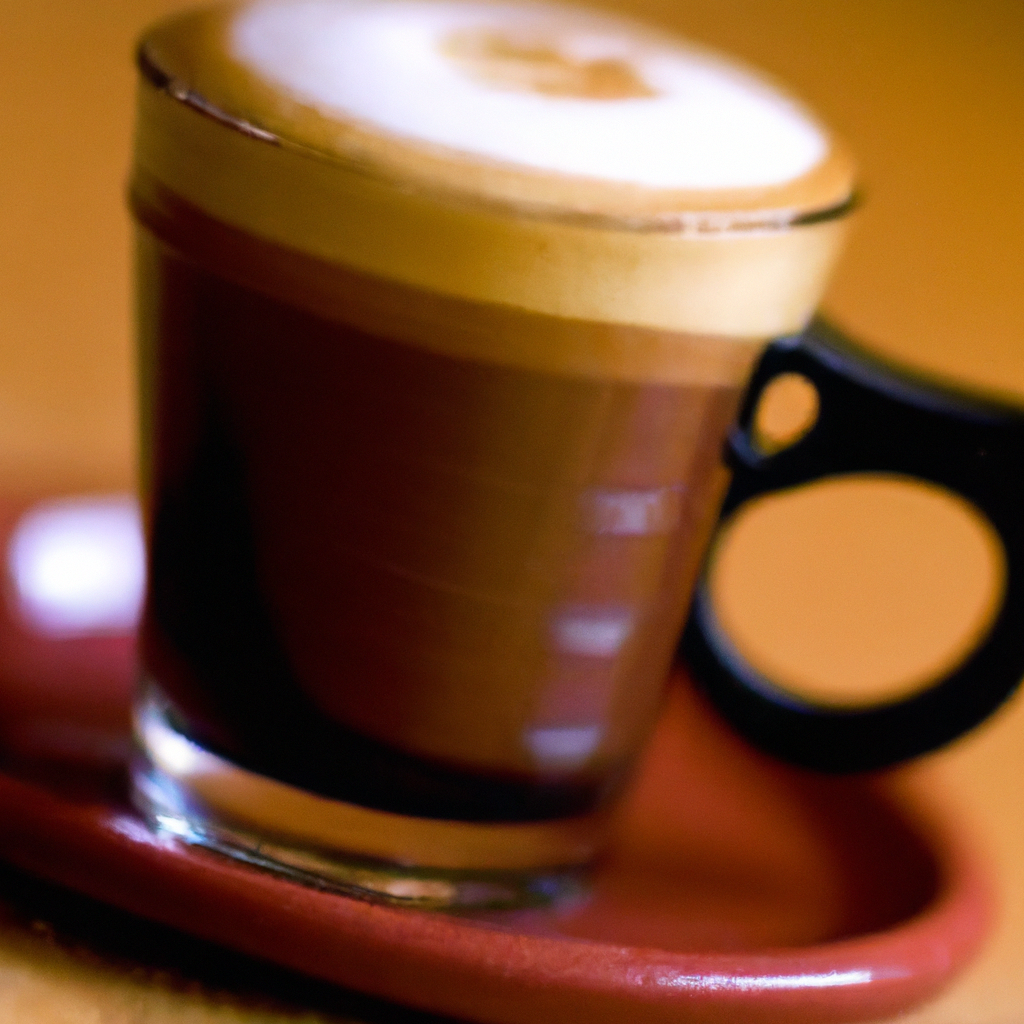
Creating the Perfect Shot
Pre-infusion Stage
Pre-infusion is a technique that involves saturating the coffee grounds with a small amount of water before the full extraction begins. This stage helps to ensure even extraction and improves the overall flavor and aroma of the espresso shot. Many espresso machines have pre-infusion settings, while manual machines require manual control of the water flow. Experiment with different pre-infusion times to find the sweet spot that enhances the extraction and taste of your espresso.
Shot Timing and Volume
Timing and volume are crucial factors in determining the quality and flavor of your espresso shot. A well-extracted shot typically lasts around 25 to 30 seconds and yields approximately 1 to 2 ounces of espresso. However, these numbers can vary depending on personal taste preferences and the coffee beans used. Experimenting with different shot timings and volumes allows you to optimize extraction while maintaining the desired strength and balance.
Recognizing Quality Shots
Recognizing a quality espresso shot requires a keen eye and an experienced palate. A well-extracted shot will exhibit a rich crema with a caramel-brown color and a velvety texture. The aroma should be inviting, with a harmonious balance of sweetness, acidity, and bitterness. After taking a sip, the flavors should be well-rounded and balanced, leaving a pleasant aftertaste that lingers on your palate. Over time, with practice and experimentation, you will train your senses to appreciate and identify the nuances of a quality shot.
Shot Variations and Adjustments
Espresso is a versatile base that can be transformed into a variety of delicious drinks. By making simple adjustments to your espresso shot, you can create a whole new world of flavors and textures. For example, a ristretto shot uses less water, resulting in a highly concentrated and intense flavor. On the other hand, a lungo shot uses more water, producing a milder and more diluted espresso. Explore different shot variations and ratios to craft unique drinks that suit your taste and cravings.
The Art of Milk Frothing
Milk Frothing Techniques and Textures
The art of milk frothing is an essential skill for creating popular milk-based espresso drinks such as cappuccinos and lattes. There are two primary milk frothing techniques: steaming and frothing. Steaming involves heating the milk while incorporating minimal air to create a creamy and velvety texture. Frothing, on the other hand, involves aerating the milk to create a thicker and denser foam. The texture of the milk can range from a dense microfoam for latte art to a creamy froth for cappuccinos. Practice and experimentation will help you achieve the desired milk texture for each specific drink.
Milk Frothing Tips and Tricks
When frothing milk, start with fresh, cold milk as it froths best when at a lower temperature. Position the steam wand just below the surface of the milk to create a whirlpool effect and promote even heating and texturing. As you froth, gradually lower the steam wand to maintain the desired texture. With practice, you’ll be able to control the amount of foam and the thickness of the microfoam, allowing you to create latte art or achieve the perfect balance of milk and foam for a cappuccino.
Common Espresso Drinks and Their Recipes
Now that we have covered the basics of crafting espresso drinks, let’s explore some popular and delicious recipes. These coffee creations are sure to impress your friends and satisfy your caffeine cravings. From classic espresso shots to creamy lattes, there is a drink for every coffee lover. Grab your favorite coffee beans, fire up your espresso machine, and let’s get brewing!
Espresso
The foundation of all espresso drinks, a classic shot of espresso is a concentrated and intense experience. To prepare an espresso shot, follow these steps:
- Measure 18-20 grams of freshly roasted coffee beans.
- Grind the coffee beans to a fine consistency.
- Distribute and tamp the coffee grounds evenly in the portafilter.
- Preheat your espresso machine and portafilter.
- Insert the portafilter into the machine and start the extraction.
- Aim for a 1:2 coffee-to-water ratio and a 25-30 second extraction time.
- Watch as the rich, dark liquid fills your espresso shot glass.
- Admire the velvety crema and take in the enticing aroma.
- Sip and savor the flavors, noting the balance of acidity, sweetness, and bitterness.
Americano
An Americano is a simple yet satisfying espresso-based drink that combines the boldness of espresso with the volume of hot water. To make an Americano, follow these steps:
- Brew a standard shot of espresso as described above.
- Heat water separately to your desired temperature.
- Pour hot water into a cup, filling it halfway to three-quarters full.
- Add the espresso shot to the cup with the hot water.
- Mix gently to combine the espresso and water.
- Taste and adjust the ratio of espresso to water according to personal preference.
- Enjoy a smooth and flavorful coffee that offers a milder alternative to a straight espresso shot.
Cappuccino
A cappuccino is a classic Italian espresso drink that combines equal parts espresso, steamed milk, and milk foam. Follow these steps to create a delicious cappuccino:
- Brew a double shot of espresso.
- Steam milk to achieve a creamy and velvety texture.
- Gently tap the milk frothing pitcher on the counter to remove any large bubbles.
- Pour the steamed milk into a cup, filling it one-third full.
- Carefully pour the espresso shot into the cup, allowing it to combine with the milk.
- Spoon a layer of milk foam on top of the espresso-milk mixture.
- Dust the foam with a sprinkle of cocoa powder or cinnamon for a touch of flavor and visual appeal.
- Sip and experience the harmonious balance of espresso, milk, and foam in every sip.
Latte
For those who enjoy a creamy and silky espresso drink, a latte is the perfect choice. The latte combines a shot of espresso with steamed milk and a small layer of milk foam. Follow these steps to make a delightful latte:
- Brew a single or double shot of espresso, depending on your preference.
- Steam milk to achieve a velvety and smooth texture.
- Slowly pour the steamed milk into a cup, filling it two-thirds full.
- Allow a small layer of milk foam to form on top of the milk.
- Carefully pour the espresso shot into the cup, allowing it to blend with the milk.
- Use a spoon to hold back the milk foam as you pour, creating a small layer of foam on top.
- Optional: Add flavor syrups such as vanilla, caramel, or hazelnut for a personalized touch.
- Take a moment to appreciate the visual layers and then dive into the creamy and satisfying flavors.
Mocha
The mocha is a delightful treat that combines the richness of chocolate with the boldness of espresso. To make a mocha, follow these steps:
- Brew a single shot of espresso.
- In a separate container, heat milk and melt in your desired amount of chocolate.
- Stir the mixture until the chocolate is fully melted and incorporated.
- Pour the chocolate-infused milk into a cup, filling it halfway.
- Carefully pour the espresso shot into the cup, allowing it to mix with the chocolate milk.
- Top with whipped cream and a sprinkle of cocoa powder for an indulgent touch.
- Sip and savor the combination of coffee and chocolate, the ultimate treat for any chocolate lover.
Macchiato
A macchiato is a small yet intense coffee drink that combines a shot of espresso with a dollop of milk foam. Follow these steps to create a macchiato:
- Brew a single shot of espresso.
- Gently tap the milk frothing pitcher on the counter to remove any large bubbles.
- Spoon a small but generous amount of milk foam on top of the espresso shot.
- Adjust the foam to create a visual contrast while maintaining a strong coffee presence.
- Optional: Add a drizzle of caramel or chocolate sauce for an extra touch of sweetness.
- Sip and experience the boldness of the espresso with a hint of milk foam, creating a unique and satisfying flavor profile.
Flat White
The flat white is a combination of espresso and creamy textured milk. It is similar to a latte but with a smaller amount of foam, resulting in a more intense coffee flavor. To make a flat white, follow these steps:
- Brew a double shot of espresso.
- Steam milk to achieve a velvety and smooth texture, similar to latte milk.
- Slowly pour the steamed milk into a cup, filling it two-thirds full.
- Gently tap the milk frothing pitcher on the counter to remove any large bubbles.
- Carefully pour the espresso shot into the cup, allowing it to combine with the milk.
- Hold back the milk foam with a spoon as you pour to create a thin layer of foam.
- Optional: Use latte art techniques to create intricate designs on the surface of the milk.
- Sip and enjoy the bold espresso flavors combined with the creamy and smooth texture of milk.
Iced Espresso Drinks
When the weather calls for something refreshing, iced espresso drinks are the perfect choice. Versatile and customizable, these drinks offer a cooling experience with a caffeine kick. Follow these steps to create your favorite iced espresso drink:
- Brew a double shot of espresso and let it cool.
- Fill a glass with ice cubes to the desired level.
- Optional: Add flavored syrups such as vanilla, caramel, or hazelnut for added sweetness.
- Pour the cooled espresso over the ice cubes.
- Add cold milk or cold water to the glass, depending on your preference and desired strength.
- Stir gently to combine all the ingredients.
- Optional: Top with whipped cream or a drizzle of chocolate or caramel sauce for extra indulgence.
- Sip and enjoy the refreshing and invigorating experience of iced espresso.
As you can see, crafting espresso drinks is truly an art form. Every step, from selecting the right coffee beans to mastering the art of milk frothing, contributes to the creation of a perfect cup. Whether you prefer a classic espresso shot or a creamy latte, there is a world of flavors waiting to be explored. So equip yourself with the necessary tools, experiment with different techniques, and let your taste buds guide you on this wonderful journey through the art of crafting espresso drinks. Cheers to your next delicious cup!

